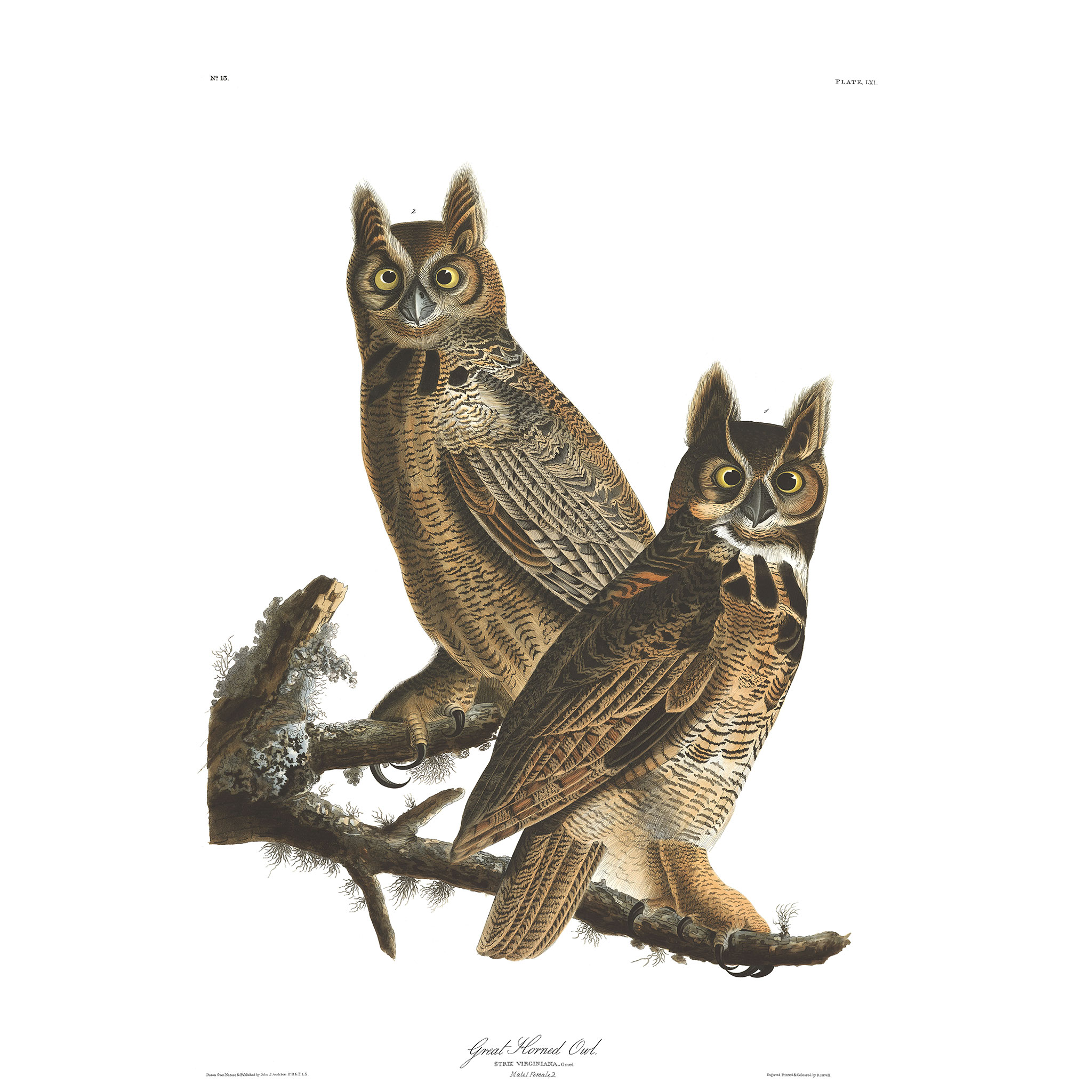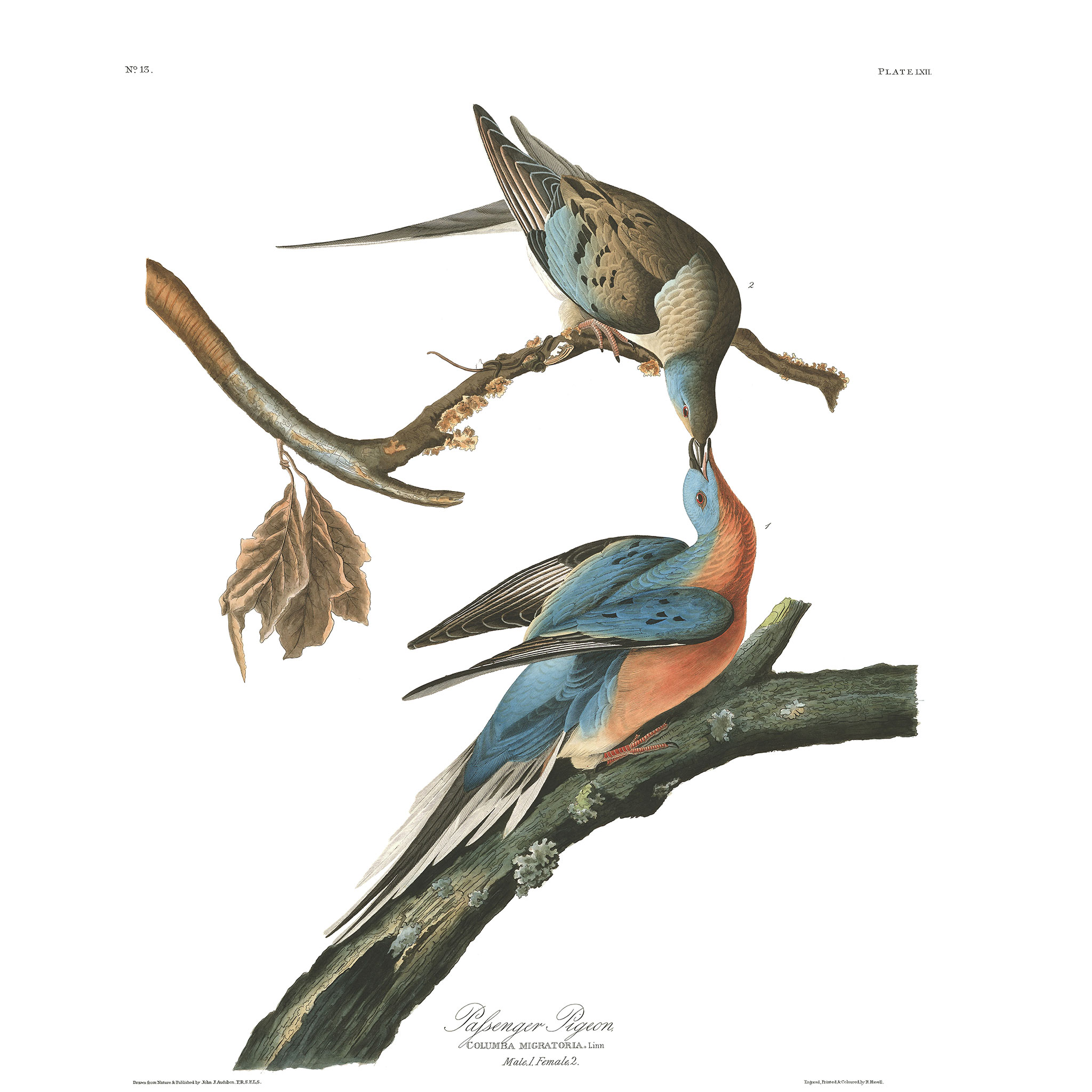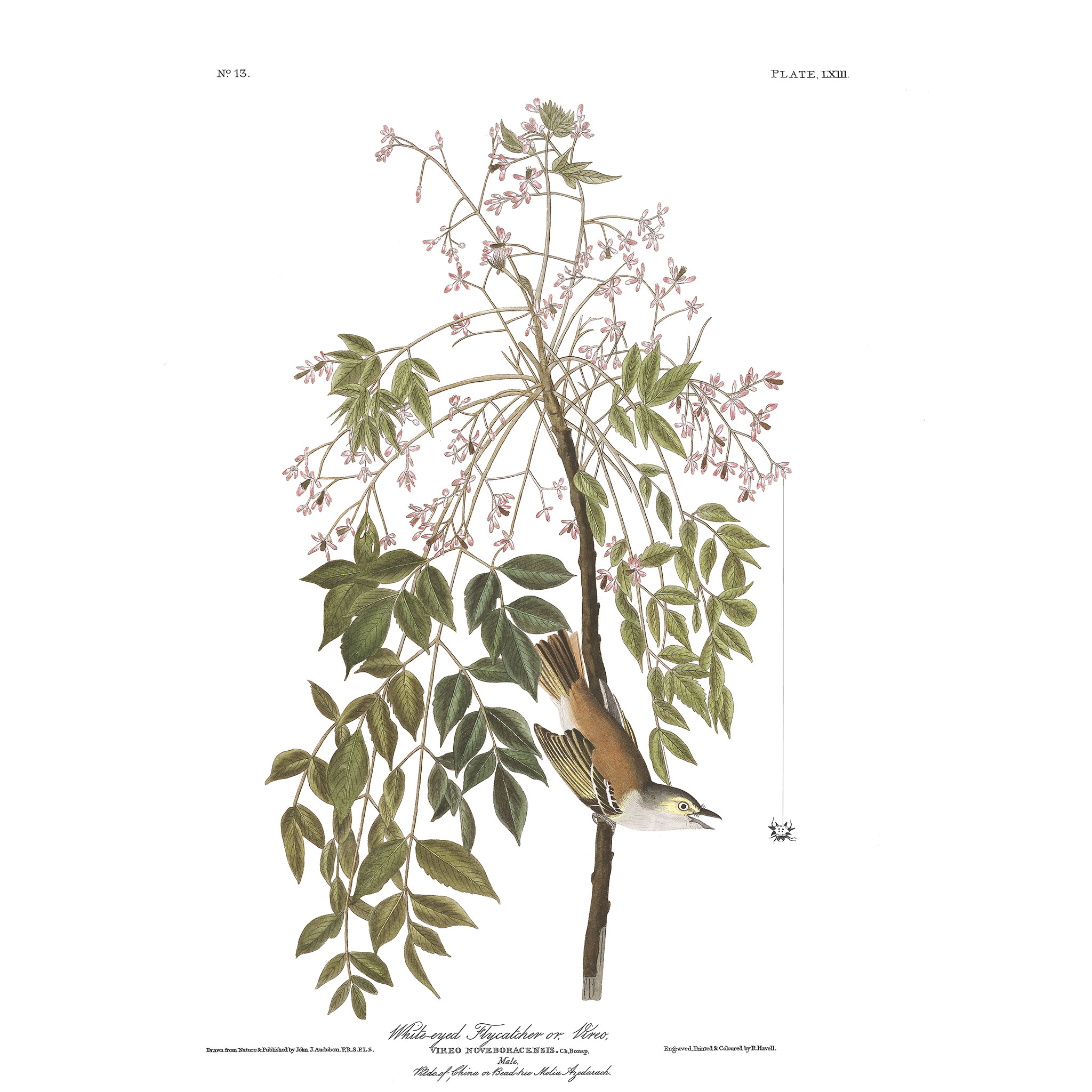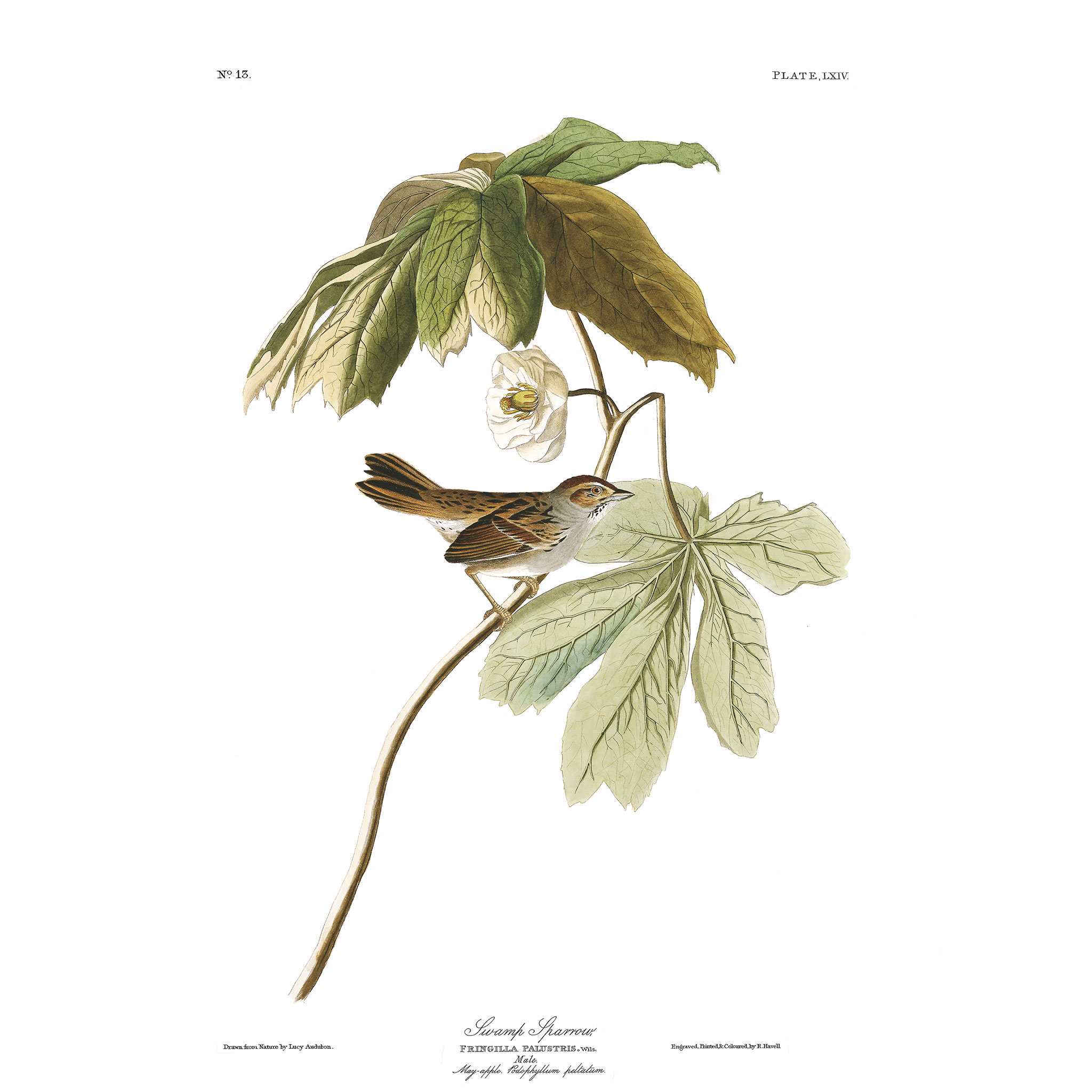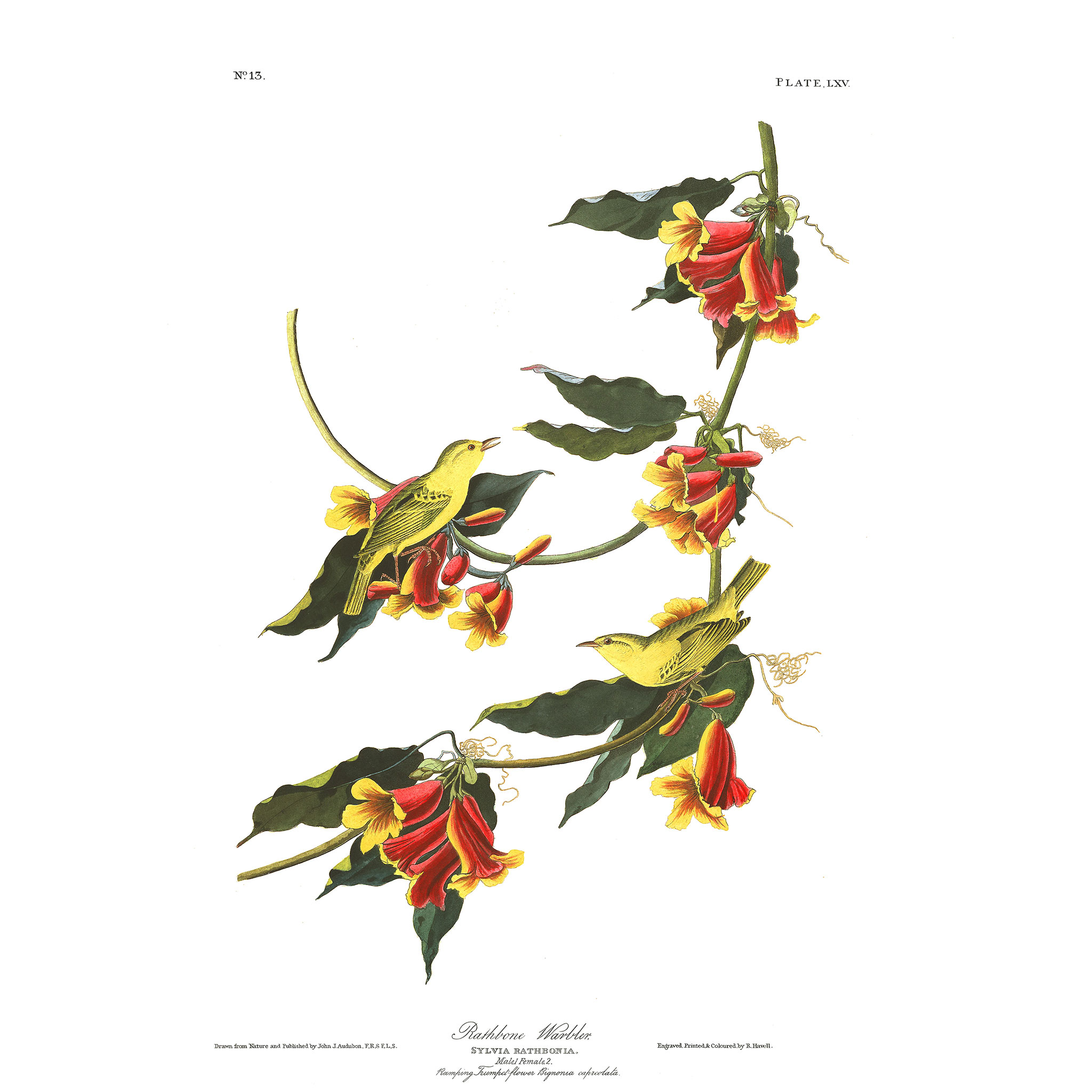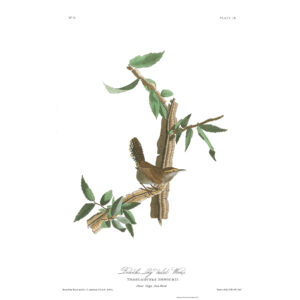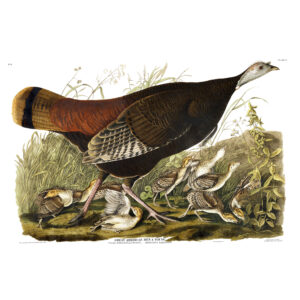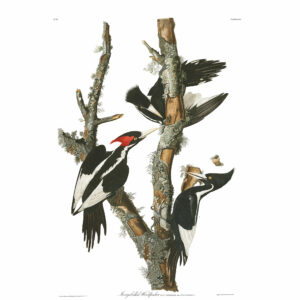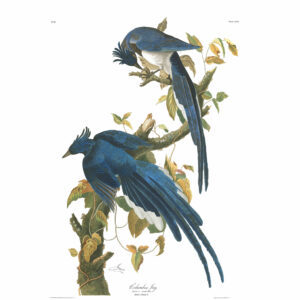Birds of America Volume 1 (Plates 61-65)
Adopt-an-Audubon Plate sponsor benefits:
- Credit on the bird label whenever it is exhibited
- Recognition on the Museum’s digital donor board in the main lobby
- Museum individual plus membership for 2 years (maximum of 2 years)
- For adoptions of $6,000 or more, a copy of our 250th anniversary book, The Charleston Museum: America’s First Museum
- For adoptions of $9,000 or more, an invitation to a private “behind the scenes” tour, for up to 4 people, of the Museum Archives and Collections Storeroom
For tax purposes, The Charleston Museum is recognized as a 501(c)(3) nonprofit organization by the Internal revenue Service, and your gift may be tax deductible. Please consult your tax advisor for further information.
Our Adopt-an-Audubon Plate Program is a means to support the Museum’s Archives collections and should in no way be construed as obtaining an ownership interest in these collections.
Plate LXI
Great Horned Owl
Drawn from Nature & Published by John J. Audubon
Engraved, Printed & Coloured by R. Havell
The flight of the Great Horned Owl is elevated, rapid and graceful. It sails with apparent case, and in large circles, in the manner of an eagle, rises and descends without the least difficulty, by merely inclining its wings or its tail, as it passes through the air. Now and then, it glides silently close over the earth, with incomparable velocity, and drops, as if shot dead, on the prey beneath. At other times, it suddenly alights on the top of a fence-stake or a dead stump, shakes its feathers, arranges them, and utters a shriek so horrid that the woods around echo to its dismal sound.
– John James Audubon
Plate LXII
Passenger Pigeon
Drawn from Nature & Published by John J. Audubon
Engraved, Printed & Coloured by R. Havell
The flight of the bird now before you is rapid, silent, and horizontal, as it moves from one tree to another, or across a field or river, and is generally continued amongst the branches of the trees in our woods…Whilst at Charleston in South Carolina, in the early part of June, 1837, I was invited by James Smith Rhett, Esq., residing in the suburbs of that city, to visit his grounds for the purpose of viewing the nest of this bird.
– John James Audubon
Plate LXIII
White-eyed Flycatcher, or Vireo
Drawn from Nature & Published by John J. Audubon
Engraved, Printed & Coloured by R. Havell
The figure of a male has been given on a branch of the tree called in Louisiana the Pride of China, an ornamental plant, with fragrant flowers. The wood is extremely valuable on account of its great durability, and is employed for making posts and rails for the fences.
– John James Audubon
Plate LXIV
Swamp Sparrow
Drawn from Nature & Published by John J. Audubon
Engraved, Printed & Coloured by R. Havell
It is a timid species; destitute of song, and merely uttering a single cheep, which is now and then heard during the day, but more frequently towards evening. They skulk along the weeds with activity, and feed principally upon the seeds of grasses, with a few insects, sometimes wading in shallow water.
– John James Audubon
Plate LXV
Rathbone Warbler
Drawn from Nature & Published by John J. Audubon
Engraved, Printed & Coloured by R. Havell
Kind reader, you are now presented with a new and beautiful little species of Warbler, which I have honoured with the name of a family that must ever be dear to me… I trust that future naturalists, regardful of the feelings which have guided me in naming this species, will continue to it the name of Rathbone’s Wood-Warbler.
– John James Audubon
$3,000.00
1 in stock


